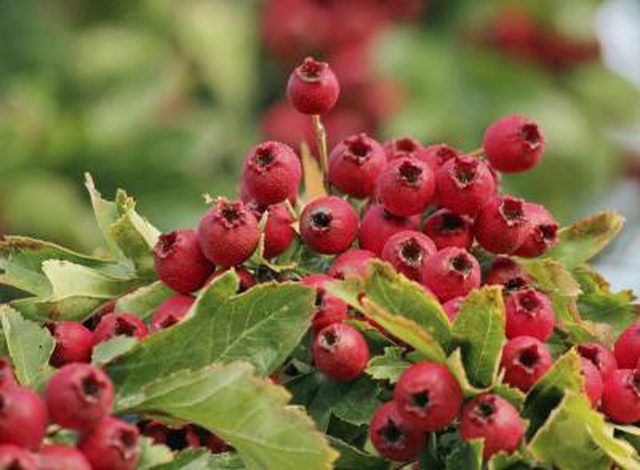Bulbs
Flower Basics
Flower Beds & Specialty Gardens
Flower Garden
Garden Furniture
Garden Gnomes
Garden Seeds
Garden Sheds
Garden Statues
Garden Tools & Supplies
Gardening Basics
Green & Organic
Groundcovers & Vines
Growing Annuals
Growing Basil
Growing Beans
Growing Berries
Growing Blueberries
Growing Cactus
Growing Corn
Growing Cotton
Growing Edibles
Growing Flowers
Growing Garlic
Growing Grapes
Growing Grass
Growing Herbs
Growing Jasmine
Growing Mint
Growing Mushrooms
Orchids
Growing Peanuts
Growing Perennials
Growing Plants
Growing Rosemary
Growing Roses
Growing Strawberries
Growing Sunflowers
Growing Thyme
Growing Tomatoes
Growing Tulips
Growing Vegetables
Herb Basics
Herb Garden
Indoor Growing
Landscaping Basics
Landscaping Patios
Landscaping Plants
Landscaping Shrubs
Landscaping Trees
Landscaping Walks & Pathways
Lawn Basics
Lawn Maintenance
Lawn Mowers
Lawn Ornaments
Lawn Planting
Lawn Tools
Outdoor Growing
Overall Landscape Planning
Pests, Weeds & Problems
Plant Basics
Rock Garden
Rose Garden
Shrubs
Soil
Specialty Gardens
Trees
Vegetable Garden
Yard Maintenance
How to Plant and Care for Pyracanthas
How to Plant and Care for Pyracanthas. The bright orange or red berries on the large pyracantha (Pyracantha spp.) make the shrub a magnet for birds and other wildlife in winter, when food is scarce. Native to Asia and Europe, the 10 pyracantha species are hardy in U.S. Department of Agriculture plant hardiness zones 5 and 6 through 9, depending on...

The bright orange or red berries on the large pyracantha (Pyracantha spp.) make the shrub a magnet for birds and other wildlife in winter, when food is scarce. Native to Asia and Europe, the 10 pyracantha species are hardy in U.S. Department of Agriculture plant hardiness zones 5 and 6 through 9, depending on the species. Pyracantha, also known as firethorn, is generally used as a large landscape shrub or hedge due to its size, at up to 18 feet tall and equally wide.
Things You'll Need
Heavy work gloves
Safety glasses
Shovel
Blanket or tarp
Utility knife
Rake
Mulch
8-8-8 or 10-10-10 granular fertilizer
Tablespoon
Anvil pruners
Loppers
Neem oil
Planting the Pyracantha
Put on shoes, long sleeves, long pants, heavy work gloves and safety glasses before working with or around the pyracantha. The shrubs are heavily armed with 1/2- to 3/4-inch thorns that may cause a reaction in sensitive individuals.
Plant the pyracantha in fall or spring. Select a planting site in full sun or part shade, where the soil is well-drained. Pyracanthas are tolerant of most soil types, including clay, but if the soil drains poorly, install large raised beds.
Dig a planting hole three times the width of the root ball and at an equal depth. Do not amend the excavated soil.
Wrap the shrub in an old blanket or a tarp to protect yourself from the thorns. Remove the grower's pot by slicing it down the side with a utility knife and carefully tip the shrub into the planting hole.
Center the pyracantha in the planting hole, spreading the roots gently. Backfill with the excavated soil, then tamp gently. Thoroughly water to settle the soil and eliminate any air pockets.
Rake 3 to 4 inches of mulch under and around the shrub. Mulch helps maintain a consistent moisture level by slowing water evaporation from the soil
Caring for the Pyracantha
Water the pyracantha with 1 inch of water weekly in summer or during dry spells in winter. Reduce watering during the rainy season. Overwatering can cause root rot.
Fertilize with an 8-8-8 or 10-10-10 fertilizer in May. Apply 1 tablespoon of fertilizer for every foot of the shrub's height, carefully scratching the granules 2 to 3 inches into the soil. Water the shrub thoroughly after fertilizing.
Prune after the pyracantha finishes blooming, in summer. Pyracantha may be pruned severely to reduce the size of the shrub, or lightly to preserve the flowers and berries. Remove dead, dying or crossing branches with anvil pruners or loppers to allow air circulation through the shrub.
Monitor the shrub for signs of fire blight. Fire blight is a bacterial infection that kills the twigs and branches. The only treatment is to prune out the dead and dying branches, cutting back to healthy wood. Place the dead branches in the bin for trash pickup; do not put them on your compost pile. Disinfect pruning tools between cuts with a disinfectant made of equal parts rubbing alcohol and water.
Remove pests such as aphids and whiteflies. The groups of tiny green aphids in tender new growth or white whiteflies underneath the leaves are easily removed with a blast of water. Bumpy reddish or brown scale insects may be sprayed with a neem oil solution, mixed at a rate of 2 tablespoons to 1 gallon of water. Soak the undersides of the leaves and twigs with the neem oil solution to kill the insects on contact. Repeat the treatment every seven to 14 days until the infestation subsides.
Tips & Warnings
Pyracantha angustifolia "Gnome" is hardy in USDA zones 5 through 9, while Pyracantha coccinea is hardy in USDA zones 6 through 9.
Select disease-resistant varieties, such as "Mohave," "Rutgers" and "Teton," to reduce the incidence of fire blight and other diseases.
Pyracantha are used as barrier hedges due to the thick growth and sharp thorns.
Pyracantha species may be invasive in your area. Birds can carry the seeds to disturbed areas of soil, where they may thrive.
Keep all tools, fertilizers, neem oil and the shrub trimmings out of reach of children and pets.